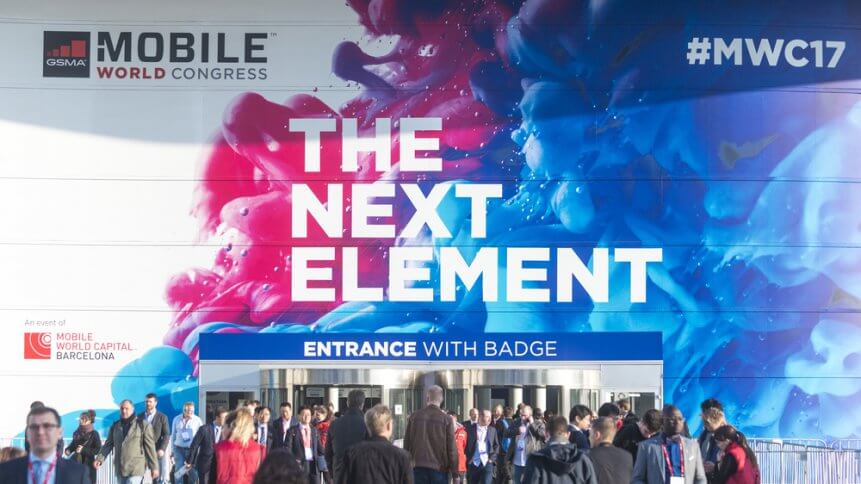Why trade shows will survive the coronavirus

Last week, I received confirmation for my flights, accommodation, and registration for the Mobile World Conference (MWC) in Barcelona. But after a week where big names such as LG, ZTE, Ericsson, NVidia, Intel, Vivo, Sony, and Amazon pulled out, it wasn’t too much of a surprise to see the event was canceled.
Each year MWC attracts 107,000 attendees and 2,400 exhibitors from over 200 countries. It’s not just about showcasing the latest mobile innovations. The event is big business with an economic impact of 492 million euros and also generates 14,100 part-time jobs. MWC is where companies pitch to investors, and business deals are secured.
Canceling the event due to coronavirus fears was a sensible choice. Gathering people from all over the world into one crowded exhibition would have been irresponsible. But could it make large corporations think differently about how they spend their budgets in the future?
Would a new breed of virtual conferences be more suitable to a digital age of sustainability?
Why virtual conferences are not the answer
Sony has opted to make its announcements on its YouTube channel where they can attempt to control the narrative. It could also help the company tick a few sustainability boxes too.
It can only be a matter of time until a market leader says something along the lines of, “as part of our commitment to reducing our carbon footprint, we will be broadcasting our announcements online for the global community.”
There is an argument that if technology can reduce unnecessary travel via planes, trains, and automobiles, we are heading in the right direction. But the problem is both the industry, businesses, and consumers all lose. Showcasing a shiny video promo and list of specifications highlights one of the increasing challenges in our overly digitized world.
The smartphone is now our primary device. Human conversations with journalists and attendees who are sharing their hands-on stories will reveal more insights than any presentation on YouTube. If you or your business are going to commit to a $1,000 smartphone, the look, feel, and build will play a significant role in your decision.
Everything from the size, how it fits in your hand, and the brightness of the screen display are all critical points. After stalled growth, the smartphone industry is desperately trying to reignite our interest with the promise of higher data speeds and faster responsiveness by overhyping 5G capabilities.
Stats around how quickly you can download a 3GB movie are irrelevant to businesses. But testing your remote working setup helps everyone understand how it could directly impact their world and create new opportunities.
Protecting the human side of conferences in a digital age
Far away from the glitz and glamor of the latest shiny handsets, events such as MWC allow much smaller companies to have big conversations with the world’s carriers and infrastructure providers. Everything from showcasing new 5G applications to the unsexy side of 5G testing to infrastructure equipment comes to life on the busy trade show floor.
Fears around the coronavirus have decimated other conferences throughout the world too. The event’s that are going ahead are introducing handshake bans to help stop the spreading of the virus. But when the threat has been removed, will we continue to retreat to the safe haven of a digital world and risk removing the human touch from business?
My biggest fear for the future is not the coronavirus. It’s how many companies could begin to rethink their relationships with the exhibition industry.
A YouTube channel will give you more of what you want to see. But nothing can beat walking on a trade show floor and opening yourself up to serendipitous moments. That is how we build relationships with new people, businesses, and solutions to create future opportunities.
Why we must take breaks from our echo chambers
Spotify, Netflix, Amazon, and our favorite social media channels lock us all in personalized echo chambers where we receive more of what we like.
But if we are serious about introducing greater innovation and diversity of thought into our business, we all need to break out of these walled gardens to hear new points of view, ways of working and different ways of using technology.
Omar Ahmad, once said, “We live in a digital world, but we’re fairly analog creatures.” We travel to trade shows to stimulate new ideas and discover creative ways to support our businesses. That’s how we increase our knowledge of emerging trends, products, and resources. In doing so, we are also forging new relationships, raising brand awareness while also keeping a close eye on our competitors.
Before rethinking your relationships with the traditional tradeshow, think about what you will be sacrificing when you hide behind a computer screen. Sure, video conferencing and video channels have their place, but face to face conversations, shaking hands, getting hands-on with tech, and connecting with decision-makers in your industry will remain irreplaceable.
When the threat of the coronavirus clears, I hope we remember the best things in life are on the other side of fear and the safety nets we create sitting behind a computer screen watching a virtual conference.
These are just a few reasons why attending trade shows and exhibitions are so valuable to businesses, consumers and every industry.









